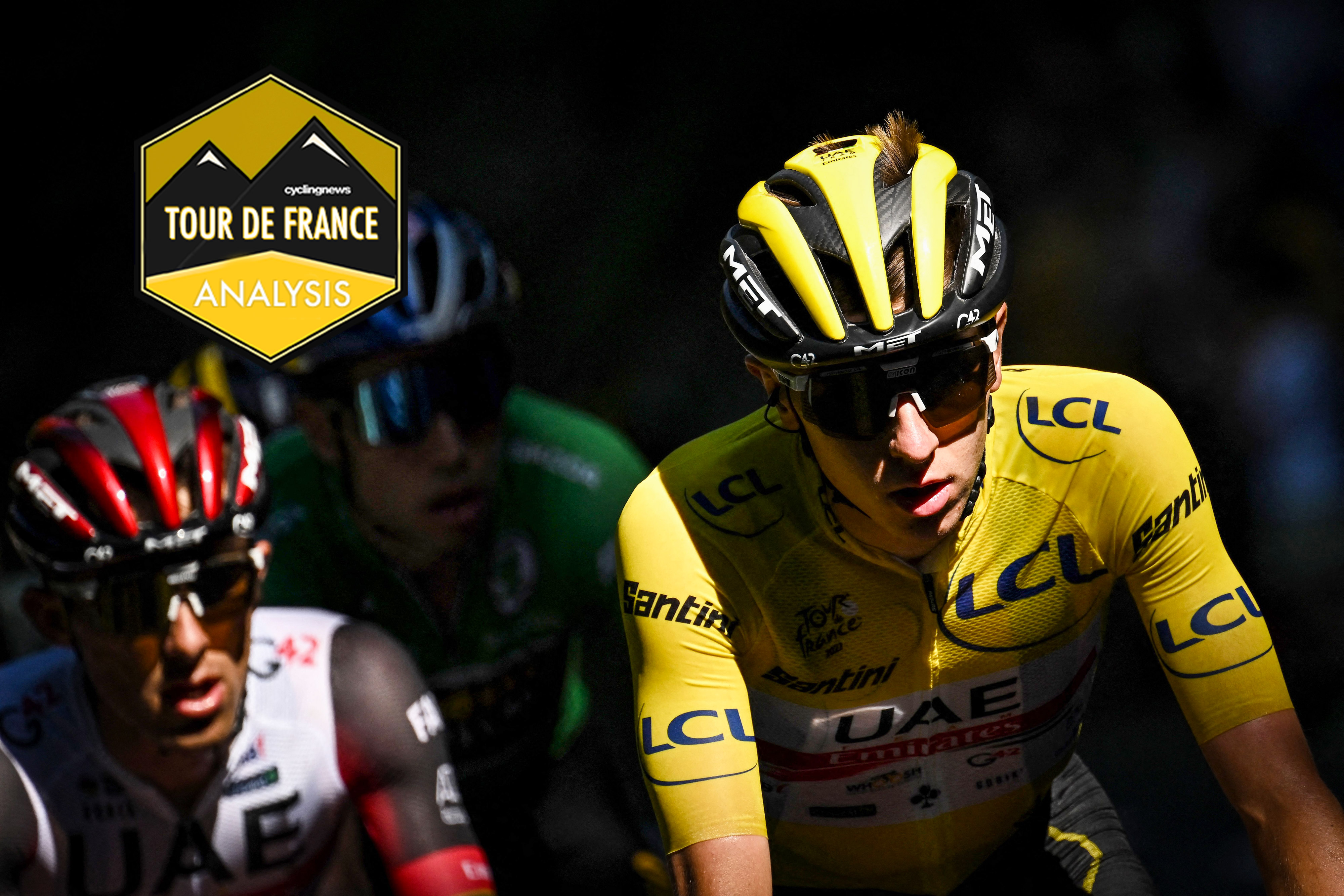Philippa York analysis: How do you solve a problem like Pogacar?
With a depleted team, the high mountains could leave Tadej Pogacar vulnerable, but the GC contenders still face a tactical puzzle

In the town of Morzine the Tour de France has erupted into familiar chaos. Leather-clad Harley Davidson riders, consequent heavy metal music, Rapha-clad cyclists and a loudspeaker spluttering out rider names from the presentation platform all fuse together with confusing harmony beneath a uniquely hot summer’s day. But amid all that familiar pandemonium, the riders at this year’s Tour are faced with some unique challenges.
COVID-19 is a serious problem for the Tour de France but in the peloton they also have another difficult problem, and it’s one they’ve had to ask themselves since the race started and for the last two editions of the race: How do you beat Tadej Pogacar?
Ineos Grenadiers came with their usual trident of hopefuls: Geraint Thomas, Adam Yates and Dani Martinez with a fourth musketeers in the guise of Tom Pidcock. Jumbo-Visma turned up confident with Primoz Roglic and Jonas Vingegaard, giving them multiple choice, whilst all the other pretenders to the Pogacar’s crown thought one leader was sufficient in the GC battle.
So far it’s not looking likely that the two-time Tour winner will be stopped from making it three in a row, but it’s important to remember that half the race is still to be raced.
By winning in Longwy and La Planche des Belles Filles, Tadej Pogacar has shown he is as strong as ever but the big question is if UAE Team Emirates are able to cope with the daily responsibilities of protecting and defending Pogacar and the yellow jersey. It’s a legitimate inquiry.
In a perfect scenario they could have lessened the stress by allowing another rider and team the yellow jersey, and all the responsibilities that come with it. That was the plan on the way to Megeve but Jumbo-Visma turned the screw and it was probably too late to get any real benefit.
There are two massive days to get through in this second week with finishes on the Col du Granon and then L’Alpe d’Huez destined to shake-up the race and confirm who are the real contenders and Pogacar’s biggest challengers.
The latest race content, interviews, features, reviews and expert buying guides, direct to your inbox!
Pretenders to the throne
I still think the victory in Paris will come down to a rivalry between two riders: Pogacar and Vingegaard.
The UAE Team Emirates domestiques have been strong enough up until now to control all the perilous situations but the loss of Vegard Stake Laengen and then George Bennett means the dynamics have changed. It’ll be up to the likes of Ineos and Jumbo to take advantage of their superior numbers.
Roglic is nearly three minutes back after crashing on the cobbles and that is significant. He will surely have to play a team role for Vingegaard. How much Roglic has recovered is going to be key for Jumbo-Visma’s options.
Ineos Grenadiers will have to commit to putting one of their GC riders in the breaks that are going to go clear each day.
Normally it would have been a role for Dani Martinez but he’s cracked, so that responsibility passes to Tom Pidcock as neither Geraint Thomas or Adam Yates are likely to be given much freedom. How Pidcock performs at this point of the race is relatively unknown but the desired outcome is about breaking UAE Team Emirates control, isolating Pogacar and then trying to distance him.
Getting tactical information from the GC teams isn’t easy before the big race days, so I asked those with less skin in the game.
Francois Lemarchand, assistant director at ASO, sits in the red Skoda directly behind the peloton and sees much more than just the broken and dropped riders. His view was that even with two guys less, UAE Team Emirates and Pogacar had everything covered. “Imperial” was his description of how the Yellow jersey was conducting affairs.
EF Education-EasyPost directeur sportif Tom Southam and Andreas Klier were of the same opinion.
The support riders are the weak spot in the Pogacar armour with Andreas naming Rafa Majka as the key to the whole thing. The Polish climber being the only one in his eyes who can close substantial gaps in the mountains.
If he isn’t there then Pogacar could be in serious trouble and unable to control his GC rivals because even he can’t go with them all. The danger zones aren’t the mountain finishes but getting to the final mountain without being worn out beforehand.
I agree with this analysis. But if Pogacar stamps his authority on the Col du Granon or L’Alpe d’Huez, then those riders left behind will start to race not to win in Paris but to defend their own individual standing in the GC. Which will only help him further.
There are a couple of flies in this theoretical ointment, though: the unfortunate mechanical incident that temporarily distances Pogacar. There’s also the risk of an ambush on a less vertically challenging stage.
Both would be brutal ways to lose the 2022 Tour de France, then the demise of Rafa Majka could be no less dramatic and equally significant.
Philippa York is a long-standing Cyclingnews contributor, providing expert racing analysis. As one of the early British racers to take the plunge and relocate to France with the famed ACBB club in the 1980's, she was the inspiration for a generation of racing cyclists – and cycling fans – from the UK.
The Glaswegian gained a contract with Peugeot in 1980, making her Tour de France debut in 1983 and taking a solo win in Bagnères-de-Luchon in the Pyrenees, the mountain range which would prove a happy hunting ground throughout her Tour career.
The following year's race would prove to be one of her finest seasons, becoming the first rider from the UK to win the polka dot jersey at the Tour, whilst also becoming Britain's highest-ever placed GC finisher with 4th spot.
She finished runner-up at the Vuelta a España in 1985 and 1986, to Pedro Delgado and Álvaro Pino respectively, and at the Giro d'Italia in 1987. Stage race victories include the Volta a Catalunya (1985), Tour of Britain (1989) and Critérium du Dauphiné Libéré (1990). York retired from professional cycling as reigning British champion following the collapse of Le Groupement in 1995.
